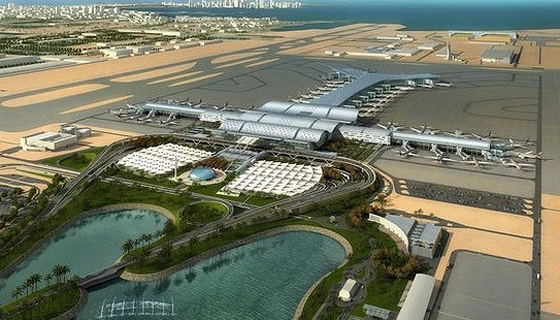The construction sector in Qatar, accounting for almost 4% of the country’s GDP, has been boosted since the selection of the country to host the World Cup at end 2010. The government’s strategy that involves earmarking more than $100 billion for world cup preparations has allowed the sector to recover in 2011 following a stagnation period. Ever since, it has maintained a steady path with growth standing at 10.6% in 2012 compared to a level of 10.5% in 2011.
According to Deloitte, Qatar was the third most active GCC construction market in 2012, after the UAE and Saudi Arabia, with $10.4 billion worth of contracts awarded. Transport infrastructure dominated Qatar’s construction sector, with four of the five biggest contracts awarded for major transportation projects. In fact, Qatar has noticed the need for upgrading its transport system in light of the rising car ownership and the inflows of expatriates, both resulting from the rapid economic expansion. As a matter of fact, the national development plan has secured $14.6 billion for roads and associated facilities.
The completion date for these projects was set for 2016 while work has already started in north Doha. Deloitte estimates transport construction in Qatar at 58% of total construction expenditure. It is worth mentioning in this regard that the opening of Qatar’s new Hamad International Airport has been hit by another delay. The opening, which was has been postponed several times since 2010, was due on April 1, 2013. The postponement was referred to the airport’s failure to meet safety and security standards.
Also, according to Deloitte, Qatar has the second largest value of projects planned or underway in the GCC after Saudi Arabia. MEED estimates the total value of these projects at $222 billion. It is expected that Qatar will spend $140 billion on infrastructure development in preparation for the 2022 World Cup and in line with the country’s 2030 Vision. However, according to Business Monitor International (BMI), the majority of these projects are of long-term nature and hence, their growth impact will only be materialized from 2016 onwards.
The budget on projects currently in the pipeline is broken down over roads ($20 billion), railways ($25 billion), New Doha International Airport ($15.5 billion), stadiums ($4 billion), a deepwater seaport ($8 billion), and transport corridor project in Doha ($1 billion).
Commercial construction accounts for 23% of total construction spending and includes: the Hamad Medical City, due in 2018, and set to become the largest hospital in the world; the already embarked on $1.37 billion Doha Festival City; and the Lusail City residential project covering 38 square kilometers and housing 450,000 habitants.
In addition, a $22 billion plan for upgrading the power and water sectors over the next eight years has been recently announced. The plan involves building two major power stations, along with 140 substations and five strategic reservoirs, as well as adding 810 km of water pipelines and enhancing desalination capacity. In fact, energy projects seem to be at the heart of Qatar’s strategy for the coming few years, with plans to spend $18.9 billion on electricity and water networks over the next ten years. Further investment in solar power is planned, both to counter criticism over the country’s large carbon footprint and to diversify away from hydrocarbons.
ifpinfo
11 August

























































